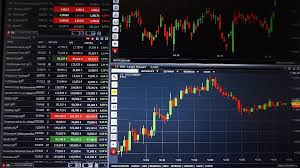
Leverage is a key concept in the world of forex trading, allowing traders to amplify their potential returns. By borrowing funds from a broker, traders can control a larger position than their initial capital allows. For instance, with a leverage ratio of 100:1, a trader can control $100,000 with just $1,000 of their own money. However, while leverage can enhance profits, it also increases the risk of significant losses. A careful understanding and management of leverage is imperative for anyone looking to navigate the forex market effectively. For more insights on trading, visit leverage in forex trading trader-apk.com.
What is Leverage in Forex Trading?
Leverage in forex trading refers to the use of borrowed funds to increase the potential return on investment. This mechanism is a double-edged sword, allowing traders to magnify their profits while simultaneously increasing the risk of loss. Essentially, leverage lets you control a larger amount of money than what you actually have in your trading account.
How Does Leverage Work?
When you trade currencies, you often do so in pairs, such as EUR/USD. The leverage offered by brokers is expressed as a ratio, such as 50:1, 100:1, or even 500:1. This means that for every dollar you invest, you can control a greater amount of currency. For instance, if you have a leverage of 100:1, a $1,000 deposit allows you to control a position of $100,000.
Benefits of Using Leverage

One of the main benefits of leverage is the ability to enhance your potential earnings. In forex trading, small price changes can lead to significant profits when leveraged correctly. With high leverage, even a relatively small investment can yield substantial returns. Besides, leverage provides traders with the opportunity to diversify their portfolios without the need for significant capital.
Risks Associated with Leverage
While the potential for gains is enticing, it is crucial to recognize the risks associated with trading on leverage. The more leverage you use, the more susceptible you are to market fluctuations. A small adverse movement in the market can lead to larger-than-expected losses, potentially wiping out your investment. Furthermore, brokers may employ margin calls, requiring you to deposit more funds if your account balance falls below a certain level due to trading losses.
Choosing the Right Level of Leverage
Determining the right level of leverage is crucial for effective forex trading. Here are several factors to consider:
- Your Trading Strategy: Different strategies may require different levels of leverage. Day traders may prefer higher leverage to capitalize on small price movements, while long-term investors may opt for lower leverage.
- Market Conditions: Volatile market conditions may warrant a more conservative approach, whereas stable conditions may allow for higher leverage.
- Your Risk Tolerance: Every trader has a different risk threshold. Assess your financial situation and determine a level of leverage that aligns with your risk tolerance.
- Broker Regulations: Different brokers have varying maximum leverage offerings, often influenced by regulations in their operating jurisdiction. It is essential to understand these regulations when choosing a leverage ratio.

Leverage and Margin: Understanding the Difference
In the context of forex trading, margin refers to the minimum amount needed to open and maintain a leveraged position. It is essential to distinguish between margin and leverage, as they are closely related yet distinct concepts. Margin is your equity in the trade and represents the portion of your funds that you must set aside as a deposit for the trade, while leverage indicates how much more is available for you to trade using borrowed funds.
Different Leverage Ratios
Forex brokers offer different leverage options. Here are some common leverage ratios:
- 1:1: This is no leverage at all. Your capital and trading position are the same.
- 50:1: Allows you to control $50,000 with a $1,000 deposit.
- 100:1: Control $100,000 with a $1,000 deposit.
- 500:1: Allows for a very high risk-reward ratio by controlling $500,000 with just $1,000.
Conclusion
In conclusion, leverage is a fundamental aspect of forex trading that enables traders to increase their potential returns while imposing heightened risks. Understanding how leverage works, the benefits and risks it entails, and how to choose an appropriate level of leverage are crucial for success in the forex market. Always approach trading with caution, and ensure you are equipped with sufficient knowledge and risk management strategies to navigate the complexities of leveraged trading. By doing so, you can take full advantage of the possibilities that forex trading presents.
